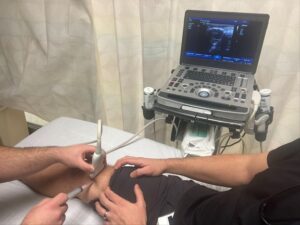Welcome back to the “52 in 52” series. This collection of posts features recently published must-know articles. Today we look at the FABLED trial.

Authors: Brannon L Inman, MD (Critical Care Fellow, Orlando, FL) // Reviewed by: Alex Koyfman, MD (@EMHighAK); Brit Long, MD (@long_brit)
Blood Culture Results Before and After Antimicrobial Administration in Patients With Severe Manifestations of Sepsis
AKA the “FABLED” Trial
Clinical question:
In adults with severe manifestations of sepsis, including systolic blood pressure less than 90 mm Hg or a serum lactate level of 4 mmol/L, what is the sensitivity of blood cultures after the administration of antimicrobials?
Study design
- Multicenter prospective observational cohort study across seven urban emergency departments.
- Blood cultures were collected from patients before the admiration of antibiotics (gold standard), and then again 30 – 120 min following administration of antibiotics. Yields from the post-antibiotic set of blood cultures were then compared against the pre-antibiotics administration set.
- Protocol was amended to include patients in whom the second (post-antibiotic) set of blood cultures were collected between 120-240 min.
PICO
Population
- Inclusion criteria
- Age ≥ 18 years old
- Patients with septic shock
- Must have 2/4 SIRS criteria plus
- Confirmed or suspected source plus
- Lactate ≥ 4mmo/L or systolic blood pressure ≤ 90 mmHg
- Had blood cultures completed before antibiotics and were available for collection of an additional set of antibiotics following antibiotics.

- Exclusion criteria:
- Severe coagulopathy
- A platelet count below 20, 000
- INR > 6.0
Intervention
- Evaluation of yield from blood cultures following antibiotics
Comparison
- Blood cultures collected prior to the administration of antibiotics
Outcome
- Primary Outcome
- Positive blood cultures obtained 30-120 and 30-240 min after antibiotics
- 30-120 min: 56.3% (95% CI 44.7% – 67.3%)
- 30-240 min (entire study population): 52.9% (95% CI 42.8% – 62.9%)
- Positive blood cultures in pre vs. post antibiotics blood cultures
- 30-120 min: 30.3% vs. 19.7%
- Difference of 10.6% (95% CI 3.3 – 17.9%)
- 30-240 min (entire study population): 31.4% vs. 19.4%
- Difference of 12% (95% CI 5.4 -18.6%)
- 30-120 min: 30.3% vs. 19.7%
- Positive blood cultures obtained 30-120 and 30-240 min after antibiotics
Takeaways:
- Drawing blood cultures 30-120 min and 30-240 min after antibiotics has significant decrements in the rate of culture positivity in patients with septic shock. These are the patients in whom we probably care the most about the growth of their cultures.
- This is a simple study design allowing for patients to serve as their own controls. In this way many variables could be controlled for without explicitly seeking out to control them.
- There were issues including 61 patients having the post-antibiotic set of cultures collected less than 30 min, or over 120 min of antibiotics. This led to a protocol change to include patients with post-antibiotic cultures collected 120-240 min. This later group would, I suspect, have lower yields from post-antibiotic cultures (though it doesn’t really seem to have had a large effect). To the authors credit, data including these samples were reported separately.
- Two of the participating institutions only collected one set of cultures as a routine. As this was done pre, and post, antibiotic administration and for all patients at these centers, it probably has a minimal effect in this comparative data.
My Take:
- Whenever possible, I will continue to try to get blood cultures before the administration of antibiotics in patients presenting with septic shock.
Reference:
- Cheng MP, Stenstrom R, Paquette K, et al. Blood Culture Results Before and After Antimicrobial Administration in Patients With Severe Manifestations of Sepsis: A Diagnostic Study. Ann Intern Med. 2019;171(8):547-554. doi:10.7326/M19-1696









1 thought on “52 in 52 – #42: The “FABLED” Trial”
Thanks for this interesting post.
The question is:
Does increased positivity means improved patient outcome?
In other words:
How many Abx adjustments were made according to blood culture results?
This is interesting especially in the population where Abx administration blunted blood culture positivity
Thanks for your work
Roberto Cosentini